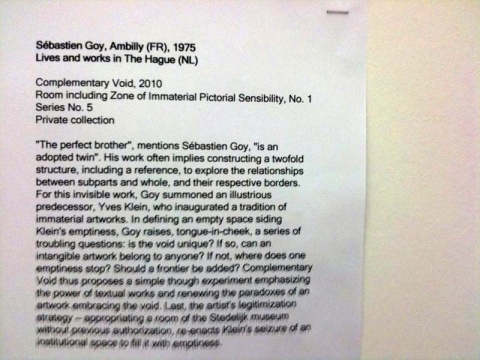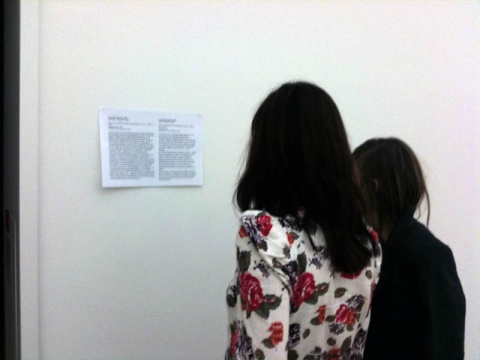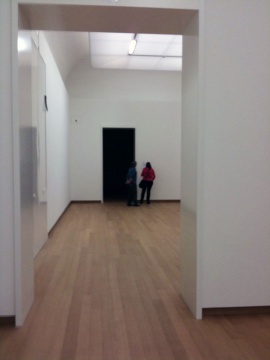Complemented Void
From S E B A S T I E N G O Y
During the exhibition Taking Place in the Stedelijk Museum of Amsterdam, two descriptions of invisible artworks were placed on the opposite walls of an empty room (1.26). The descriptions imitated the real wall descriptions, both in layout and writing style. While I was in the museum, only one visitor got confused, as these works did not appear on the map provided by the Stedelijk. The rest of the visitors exhibited normal museal behavior. The descriptions probably stayed until the closing of the exhibition.
Yves Klein, Nice (FR), 1928
Died in Paris (FR), 1962
Zone of Immaterial Pictorial Sensibility, Zone No. 1 Series No. 5, 1962
Emptied room
Collection Centre Pompidou, Paris
In his body of work, Yves Klein directly engages the artistic claim for purity in its most radical expressions. His monochromes used a brilliant ultramarine pigment, to condense "radiance", the defining quality, for him, of painting. Klein also regarded his pieces around the void, like this one, as paintings: with these works, the artist stripped the medium of any superfluous element, to distill its quintessential state — an invisible, intangible, "pictorial sensibility". The exhibition space thus contained, in the artist's view, immaterial paintings.
In ‘Zone of Immaterial Pictorial Sensibility, Zone No. 1, Series No. 5’, Klein addresses the audience's expectation for visual content and instills doubt upon the very existence of an artwork. The title, if accessible, suggests an invisible presence, echoing the artist's interest in mysticism. The proposed emptiness thus confronts the viewer's faith in art and highlights in parallel the role of the museum in defining what are the boundaries of art. Klein's interest in the painting's dematerialization announces the strategies of conceptualism and institutional critique developed during the sixties.
This work, here re-enacted, originally consisted in removing all the paintings from a museum room, during the 16th Salon Violet, an exhibition at the Musée d'Art Moderne de la Ville de Paris. One picture of the emptied room was later included, in the catalogue of the Salon Comparaisons, the museum's following exhibition.
Sébastien Goy, Ambilly (FR), 1975
Lives and works in The Hague (NL)
Complementary Void, 2010
Room including Zone of Immaterial Pictorial Sensibility, No. 1 Series No. 5
Private collection
"The perfect brother", mentions Sébastien Goy, "is an adopted twin". His work often implies constructing a twofold structure, using two elements referring to each other, to explore the relationships between subparts and whole, and their respective borders. For this invisible work, Goy summoned an illustrious predecessor, Yves Klein, who inaugurated a tradition of immaterial artworks. In defining an empty space siding Klein's emptiness, Goy raises, tongue-in-cheek, a series of troubling questions: is the void unique? If so, can an intangible artwork belong to anyone? If not, where does one emptiness stop? Should a frontier be added? Complementary Void thus proposes a simple though experiment emphasizing the power of textual works and renewing the paradoxes of an artwork embracing the void. Last, the artist's legitimization strategy — appropriating a room of the Stedelijk museum without previous authorization, re-enacts Klein's seizure of an institutional space to fill it with emptiness.


